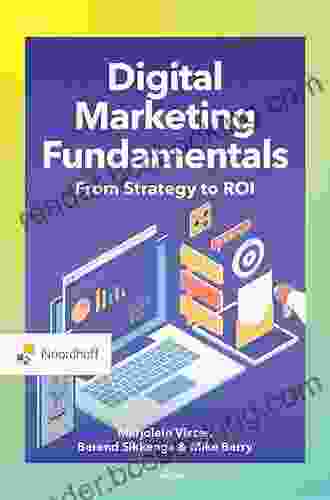Cinchona Across the Atlantic World, 1751–1820: Science in History

Cinchona, a genus of trees native to the Andes, is the source of quinine, a drug used to treat malaria. Quinine is one of the most important drugs in history, and cinchona has been a major global commodity for centuries. The history of cinchona is a fascinating story of science, medicine, and commerce.
The first Europeans to encounter cinchona were Spanish conquistadors who arrived in Peru in the 16th century. The conquistadors quickly learned that the indigenous people of Peru used cinchona to treat malaria. In 1633, a Spanish Jesuit missionary named Juan de Vega published a book describing the medicinal uses of cinchona. Vega's book was widely read in Europe, and soon cinchona was being used to treat malaria all over the world.
5 out of 5
| Language | : | English |
| File size | : | 5281 KB |
| Text-to-Speech | : | Enabled |
| Screen Reader | : | Supported |
| Enhanced typesetting | : | Enabled |
| Print length | : | 300 pages |
In the 18th century, European scientists began to study cinchona. In 1751, the Swedish chemist Peter Lagerhjelm isolated quinine from cinchona bark. Quinine is the active ingredient in cinchona, and it is much more effective than cinchona bark in treating malaria.
The discovery of quinine led to a surge in demand for cinchona. In the early 19th century, the Dutch began to cultivate cinchona in plantations in Java. By the mid-19th century, Java was the world's leading producer of cinchona. In the late 19th century, the British began to cultivate cinchona in plantations in India. India soon became the world's second largest producer of cinchona.
The cultivation of cinchona in Java and India led to a dramatic decline in the price of quinine. Quinine became affordable for people all over the world, and malaria became a much less deadly disease.
Cinchona is a remarkable tree with a long and fascinating history. The story of cinchona is a testament to the power of science, medicine, and commerce to improve human health.
The Science of Cinchona
Cinchona trees contain a number of alkaloids, including quinine, quinidine, and cinchonine. These alkaloids are bitter and toxic, but they are also effective in treating malaria. Quinine is the most important of the cinchona alkaloids, and it is the only one that is still used to treat malaria today.
Quinine works by killing the malaria parasite in the blood. The parasite is a single-celled organism that invades red blood cells and multiplies. Quinine kills the parasite by interfering with its metabolism.
Quinine is a very effective drug, but it can also have side effects. The most common side effects of quinine are nausea, vomiting, and diarrhea. In rare cases, quinine can cause serious side effects, such as heart problems and seizures.
The Medicine of Cinchona
Cinchona has been used to treat malaria for centuries. In the 17th century, cinchona bark was the only effective treatment for malaria. In the 18th century, the discovery of quinine made cinchona even more effective in treating malaria.
Quinine is still used to treat malaria today. It is the first-line treatment for uncomplicated malaria, and it is also used to prevent malaria in people who are traveling to areas where malaria is common.
Quinine is not the only drug that is used to treat malaria. Other drugs, such as artemisinin and mefloquine, are also effective in treating malaria. However, quinine is still an important drug in the fight against malaria.
The Commerce of Cinchona
Cinchona has been a major global commodity for centuries. In the 17th century, cinchona bark was one of the most valuable commodities in the world. In the 18th and 19th centuries, the cultivation of cinchona in Java and India led to a decline in the price of quinine. However, quinine is still a valuable drug today.
The global cinchona trade is complex and involves many different countries. Cinchona trees are grown in a number of countries, including Peru, Bolivia, Ecuador, Colombia, Java, India, and Sri Lanka. Quinine is extracted from cinchona bark and then sold to pharmaceutical companies. Pharmaceutical companies then sell quinine to pharmacies and hospitals.
The cinchona trade is important to many countries. Cinchona is a major source of income for some countries, and it is also an important drug for treating malaria. The cinchona trade is a reminder of the interconnectedness of the global economy.
Cinchona is a remarkable tree with a long and fascinating history. The story of cinchona is a testament to the power of science, medicine, and commerce to improve human health. Cinchona is a valuable drug that has saved millions of lives.
5 out of 5
| Language | : | English |
| File size | : | 5281 KB |
| Text-to-Speech | : | Enabled |
| Screen Reader | : | Supported |
| Enhanced typesetting | : | Enabled |
| Print length | : | 300 pages |
Do you want to contribute by writing guest posts on this blog?
Please contact us and send us a resume of previous articles that you have written.
 Book
Book Novel
Novel Page
Page Chapter
Chapter Text
Text Story
Story Genre
Genre Reader
Reader Library
Library Paperback
Paperback E-book
E-book Magazine
Magazine Newspaper
Newspaper Paragraph
Paragraph Sentence
Sentence Bookmark
Bookmark Shelf
Shelf Glossary
Glossary Bibliography
Bibliography Foreword
Foreword Preface
Preface Synopsis
Synopsis Annotation
Annotation Footnote
Footnote Manuscript
Manuscript Scroll
Scroll Codex
Codex Tome
Tome Bestseller
Bestseller Classics
Classics Library card
Library card Narrative
Narrative Biography
Biography Autobiography
Autobiography Memoir
Memoir Reference
Reference Encyclopedia
Encyclopedia Stuart Mcrobert
Stuart Mcrobert Lillian H Chaney
Lillian H Chaney Sydney George Fisher
Sydney George Fisher James Kerr
James Kerr Wing Over
Wing Over Kirit Pandit
Kirit Pandit Stefanie K Johnson
Stefanie K Johnson Michelle Cunningham
Michelle Cunningham Kinsey Phifer
Kinsey Phifer Stacy Perman
Stacy Perman Victor Davis Hanson
Victor Davis Hanson Norihiro Yagi
Norihiro Yagi Stephen W Sears
Stephen W Sears Kirsten Hermes
Kirsten Hermes Kristina Statler
Kristina Statler Klester Cavalcanti
Klester Cavalcanti Stacy Davidowitz
Stacy Davidowitz Kristin Cast
Kristin Cast Maxim Peter Griffin
Maxim Peter Griffin Paul Vigna
Paul Vigna
Light bulbAdvertise smarter! Our strategic ad space ensures maximum exposure. Reserve your spot today!

 Arthur MasonThe Beverage Service Short Story: A Literary Masterpiece That Captures the...
Arthur MasonThe Beverage Service Short Story: A Literary Masterpiece That Captures the...
 Forrest BlairAll You Need to Know About Moving to Australia: From Getting There to Living
Forrest BlairAll You Need to Know About Moving to Australia: From Getting There to Living Osamu DazaiFollow ·6k
Osamu DazaiFollow ·6k Edmund HayesFollow ·7.1k
Edmund HayesFollow ·7.1k David MitchellFollow ·11.6k
David MitchellFollow ·11.6k Christopher WoodsFollow ·7.7k
Christopher WoodsFollow ·7.7k Adam HayesFollow ·3.3k
Adam HayesFollow ·3.3k Gerald BellFollow ·10.7k
Gerald BellFollow ·10.7k Eli BlairFollow ·14.3k
Eli BlairFollow ·14.3k J.D. SalingerFollow ·9.3k
J.D. SalingerFollow ·9.3k

 Liam Ward
Liam WardUnleash the Power of Goblin Slayer: Discover the Gripping...
Enter the Shadowy Realm of...

 Eli Brooks
Eli BrooksWalking the Territory: Your Essential Companion for...
Adventure Awaits! Prepare to immerse yourself...

 Floyd Richardson
Floyd RichardsonGoblin Slayer: A Gripping Light Novel Series That Will...
Step into the shadowy...

 Dennis Hayes
Dennis HayesFrom Strategy to ROI: The Ultimate Guide to Driving...
In the dynamic and competitive business...

 Edward Reed
Edward ReedUnveiling the Rich Tapestry of Tennis in Britain: A...
: Tennis - A British Love Affair Tennis, a...

 Michael Crichton
Michael CrichtonEscape into the Thrilling World of "Here and Now" by...
In the tapestry...
5 out of 5
| Language | : | English |
| File size | : | 5281 KB |
| Text-to-Speech | : | Enabled |
| Screen Reader | : | Supported |
| Enhanced typesetting | : | Enabled |
| Print length | : | 300 pages |








